07.05.20
How to take better climbing photographs
TCA route-setter and photographer Joseph Schenk shares great advice on how to become a better climbing photographer.
In the midst of coronavirus, it’s been pretty tough to keep ourselves busy and entertained. As such, when TCA asked if I would write a short article on climbing and photography, I jumped at the opportunity.
First, let me introduce myself. My name’s Joseph Schenk, I’m a route-setter and a photographer!

I moved to Bath in 2014 and immediately started climbing at TCA – drawn in by the superb old school route-setting, great angles and community vibe and on and off throughout the years I’ve returned for great sessions, banging tunes and friendly faces. Then, come the end of 2019 I joined the route-setting team and you may have seen me pottering about every week since.
My love of photography started young – I was lucky in that my Dad was seriously into film photography, even setting up a small darkroom in our house. I can to this day remember buying my first camera, an Olympus OM-2 when I was twelve. Several upgrades later and having fallen in love with climbing, I was never at the crag without a camera.
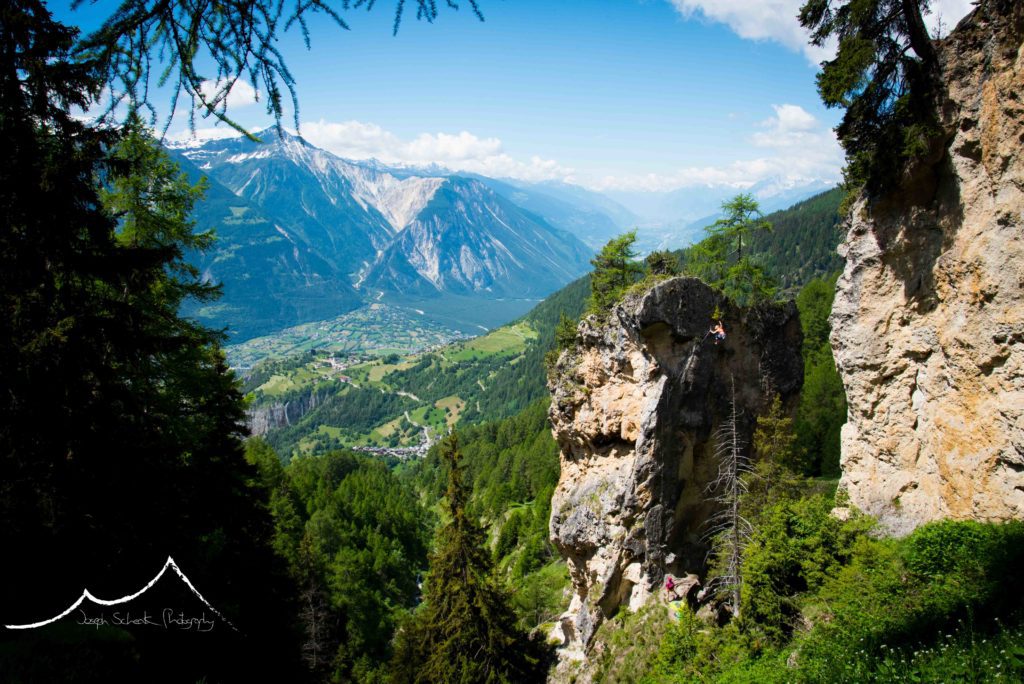
With trips around Europe to alpine climb, sport climb and boulder, I made sure to try and capture the action! I think the great thing about climbing is that it’s an emotive sport – and taking pictures of it can be a great opportunity to capture the incredible joys (and sometimes despair!) it brings.

Some of my favourite photos I’ve ever taken have been of climbing, from sport climbing in the deserts of Oman to bouldering in the forests of Fontainebleau I’ve experienced so many wonderful places with so many incredible people. Climbing as a sport brings everyone together and when combined with some of the beautiful places the sport takes you, it felt like a natural progression to start photographing it.
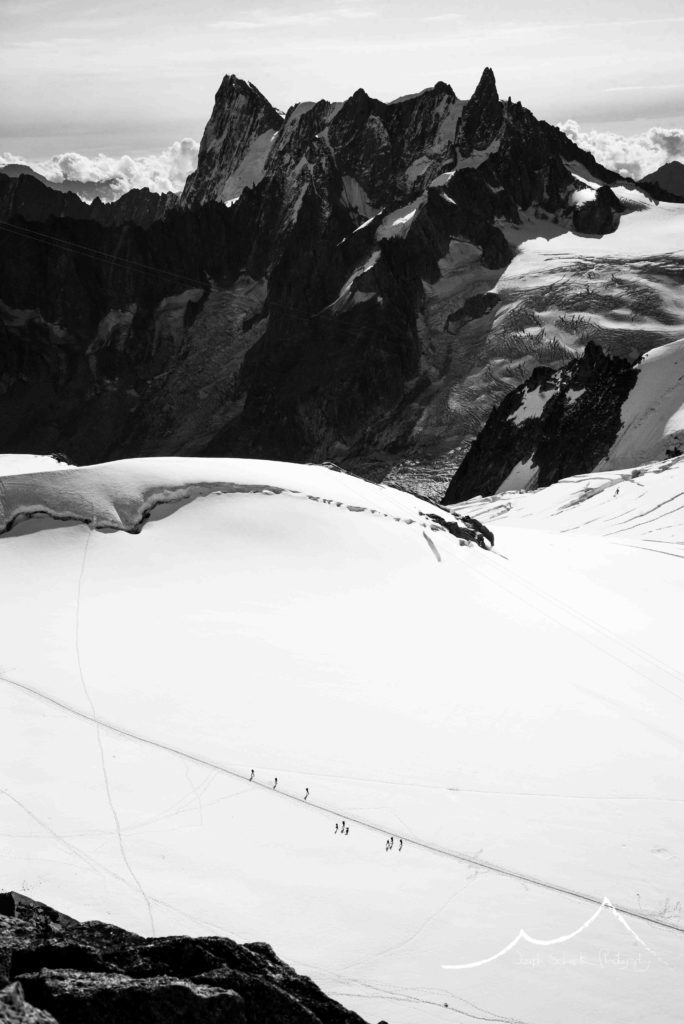
Climbing has definitely improved my photography, from learning to get the angle just right, the timing perfect, and capturing the action. But more than that, it’s taken me on a trip through many different countries and landscapes, each one providing its own unique opportunity to photograph. One of my all-time favourite photographs is the one above, with the impressive Grand Jorasses ridge in the background and the tiny alpinists in the foreground, it gives you a feel for how amazing it is to climb in the Mont Blanc massif. Equally, I took one of my favourite landscapes whilst climbing in the Dolomites last year, had it not been for climbing, I might never have taken it.
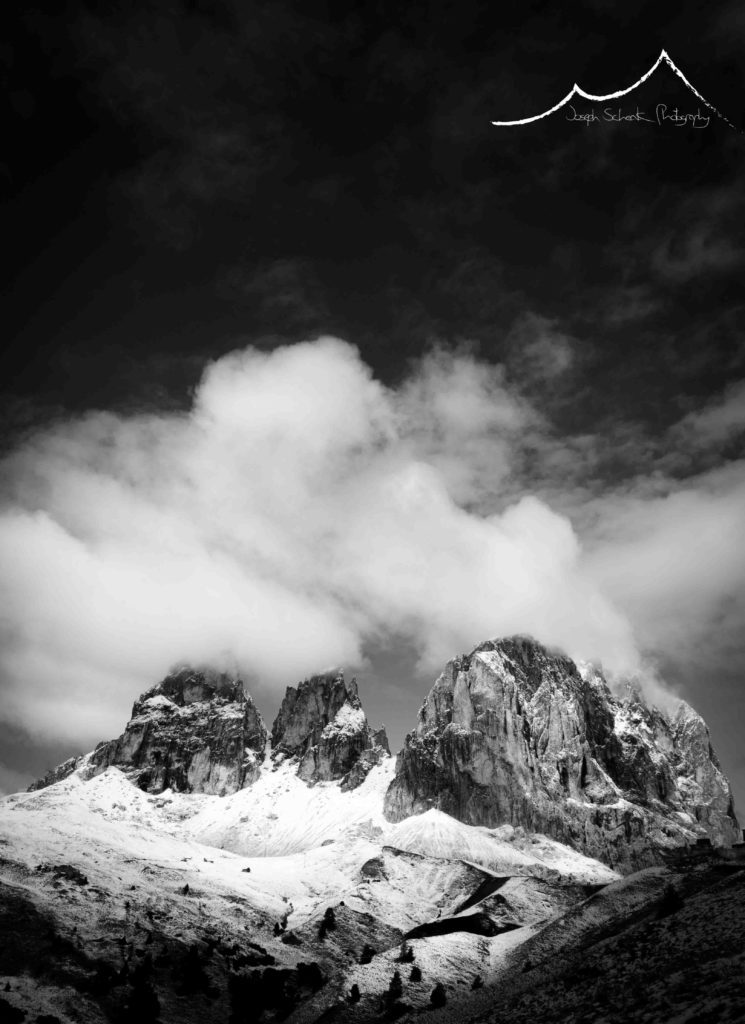
After years of photographing climbing outdoors, I took my camera inside for the next challenge – competitions! I wanted to capture the intensity of competition finals – the wonderful mix of emotions from excitement, nerves, and elation. For the past few years, I have been photographing the Blokfest competition series, and a few highlights are below.
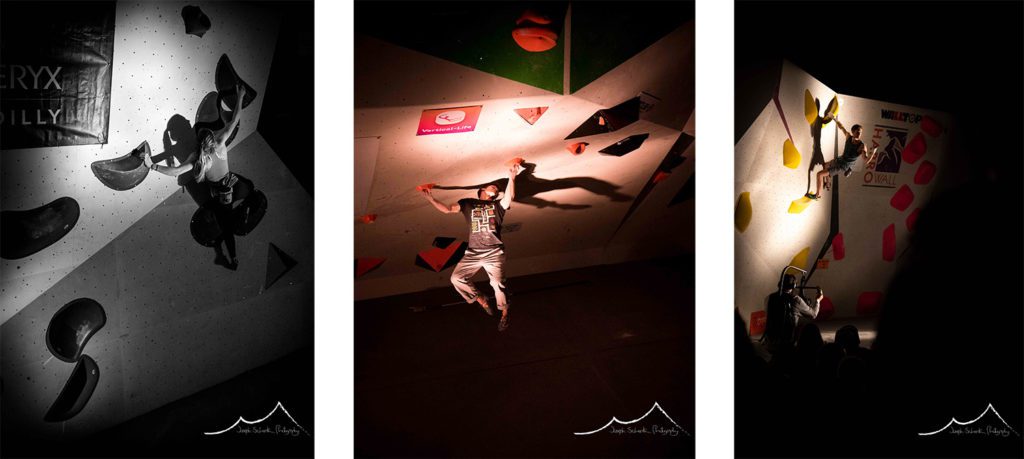
Photographing climbing competitions is quite a unique challenge. Not only is the light terrible, with the centre pitched into darkness and only a few spotlights but the action happens all at once. As a photographer, you’re tasked with capturing the exciting moments but also telling the story of the competition. Some of my best photographs have come from those special moments in competitions, such as below – the climber pulls a hard technical move whilst another competitor gasps in the background!
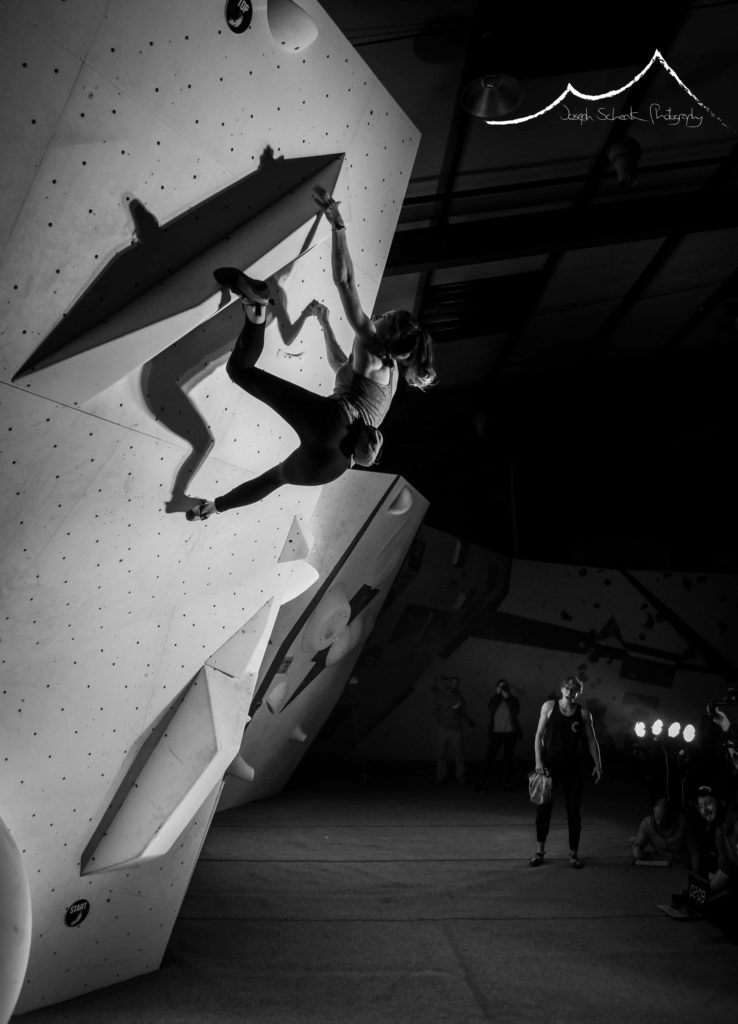
In terms of the equipment I use, I tend to favour simplicity. Particularly when on climbing trips, where I can have a lot of climbing equipment to carry (crampons, ice axes, ropes, food etc), the less photography kit I have to take with me the better! My main camera is a Nikon D750 and my go-to lens is a 24-85mm telephoto – this gives me a huge range to capture landscapes down to individual climbers. However, if I have the space, I also like to take my 50mm prime. Whilst it’s not ideal for everything, it’s pin-sharp, light-weight and can prove perfect for the right moment.

Despite this, one camera I never leave the house without is the one on my smartphone. Much as I don’t expect to take a print-worthy photo with my phone, it’s the perfect back up for when you don’t have time or space to get out a proper camera. And quite often I just want a quick snap to remember the route, the moment, the friends, or the summit. And for that, I’d highly recommend everyone gets their smartphones out and snaps away!
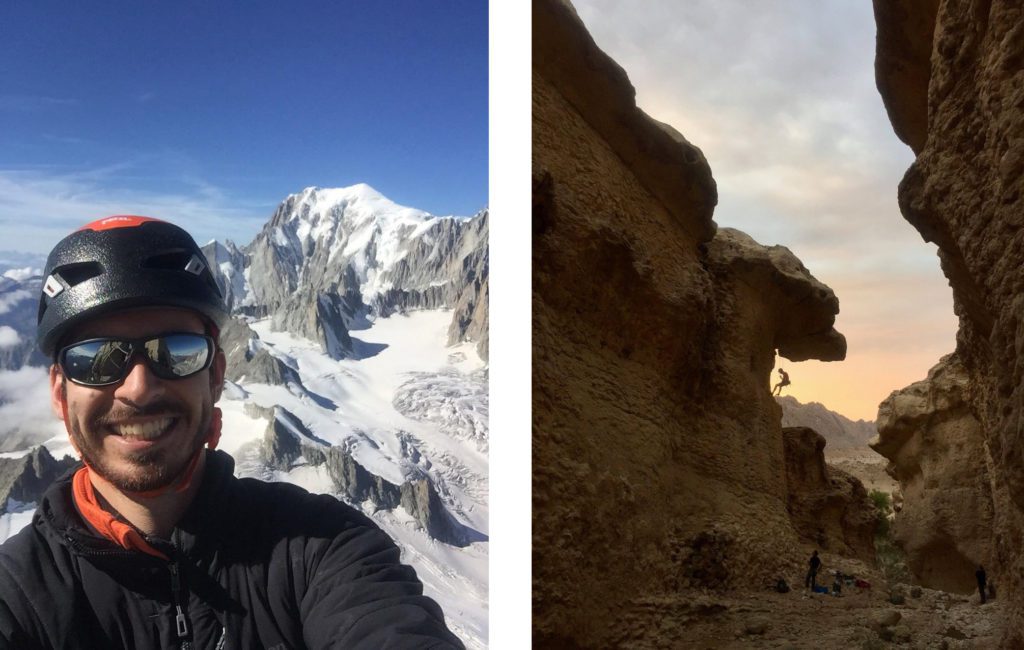
One question I get asked a lot is, how do I take better climbing photographs? The answer is simple – practice! I’m still learning each and every time I get the camera out, but here are a few bits I’ve learnt along the way:
- Look for the action! Often in climbing there’s a ‘hero’ move, capturing this can really show the effort and movement involved in reaching the top.

- Try and find an interesting angle. The classic ‘bum’ shot taken from below is hard to make interesting, see if you can move around the climb for an interesting view. Below is a photograph of the well-renowned climb ‘Gorilla Warfare’ in the Peak District, but it’s not so often shot from above!

- Look for the small details. Sometimes climbing is about more than just the send, it’s about the effort, the pain, the emotion. Focus on the little things that you love about climbing and try and capture them with your camera
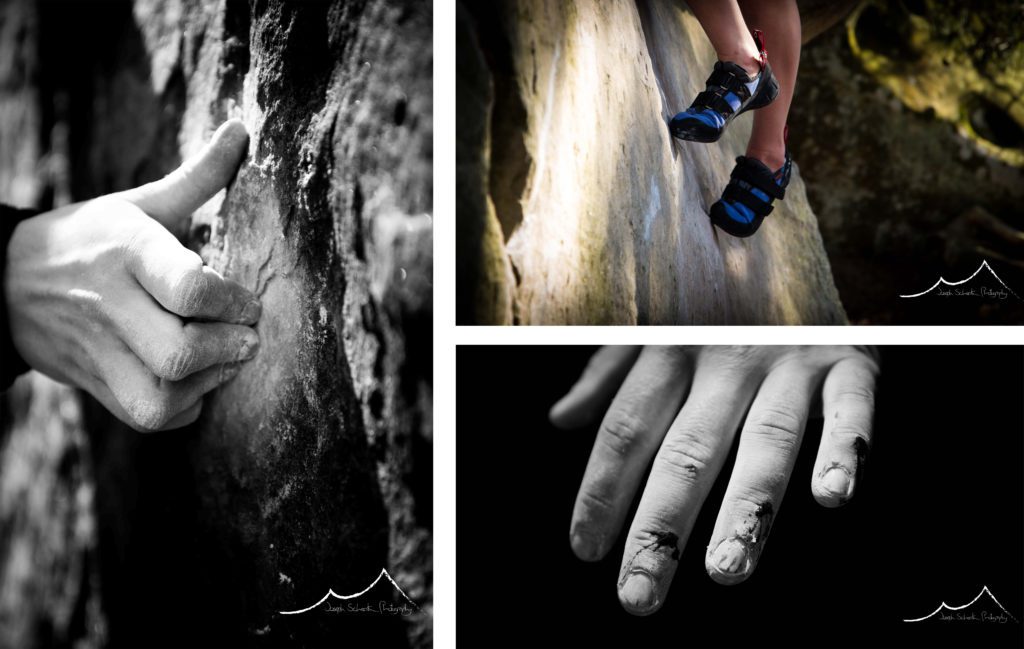
Now, whilst we’re all stuck inside there isn’t much you can do to practice these skills, but it’s a great time to get familiar with your camera. From smartphones to top end D-SLRs, there are a bunch of settings to play with. One thing you can keep yourself busy with is exploring these settings and finding out what each one does. That way when we’re all back out in the real world you’ll be ready to capture all the action straight off the bat!
I’ve spent my lockdown redesigning my website, so if you’ve enjoyed this article and you’d like to see more of my work please give it a look and a share! You can also find me on Instagram: @josephschenk_photography

Copyright © 2015-2020 Joseph Schenk. All Rights Reserved.
Do you have a story to tell or an interesting article, you can add your story to our Love Letters to Climbing project or email Helen with your idea. During shut-down TCA is doing everything it can to survive. There are lots of ways you can help. You can pay for a membership, contribute smaller regular amounts, pre-pay for vouchers and punchcards, and much more.



